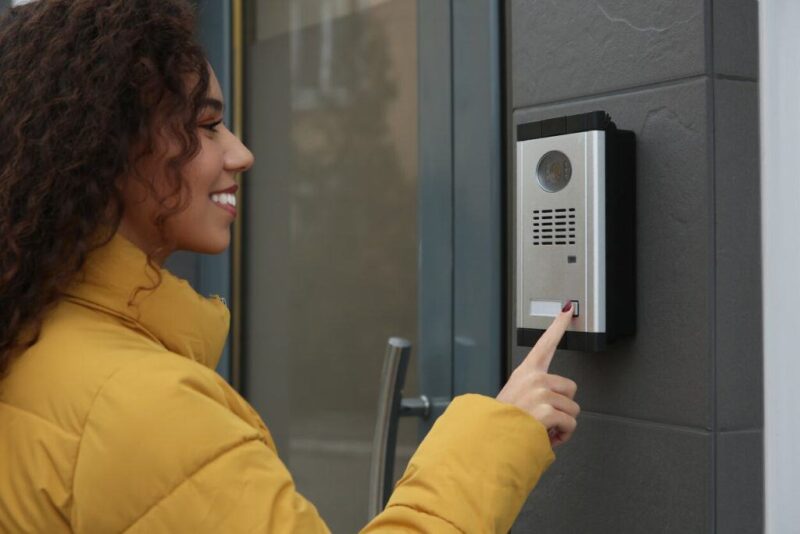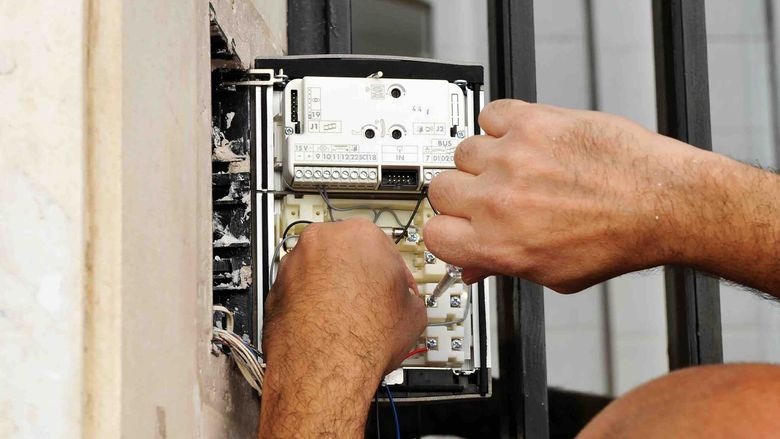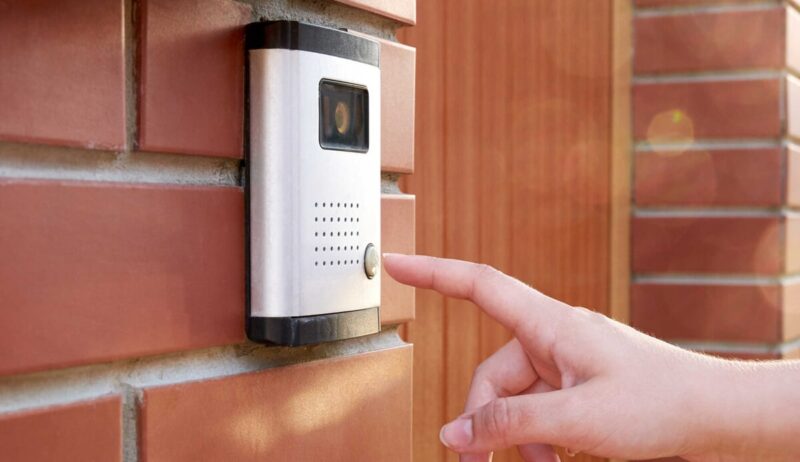The pressures on housing providers, landlords, and managing agents in today’s property scene are continually increasing.
From ensuring compliance and resident safety to overseeing access and communication, the scope of responsibilities is extensive.
A tool that has become indispensable in addressing these challenges is the intercom system, which is far more advanced than ever before.
Modern intercom systems offer a variety of functionalities that enhance security, streamline operations, and improve the experience for tenants and property managers alike. Whether handling a small block of flats or a broad housing portfolio, the right intercom technology can bring significant benefits.
From Classic to Cutting-Edge: Intercoms’ Transformation

Intercoms have been part of multi-occupancy buildings for many years. Traditionally, they were limited to audio communication between visitors and residents, typically linked to a fixed handset within the home.
However, times and expectations have evolved.
With cloud connectivity, mobile integration, and remote management platforms now available, today’s intercom systems are vastly different from their analogue predecessors.
These modern systems allow live video feeds, smartphone compatibility, and real-time access control, offering greater flexibility and control to residents and property managers.
Providers like Intratone lead this transformation, offering wireless, GSM-based intercom solutions needing minimal cabling and providing maximum ease of use.
Their systems particularly benefit housing associations, local authorities, and block managers aiming to modernise access control across their properties.
The Growing Importance of Intercoms
The demand for robust intercom systems has intensified alongside urban density and evolving security concerns.
In a typical residential building, foot traffic involves tenants as well as guests, delivery drivers, cleaners, tradespeople, and carers.
Managing and monitoring who enters and exits can quickly become challenging—especially in larger or unmanned developments.
An effective intercom system acts as a first line of defence, offering a controlled gateway that allows residents to vet visitors before granting access.
Video capabilities further enhance security by enabling visual verification, reducing the risk of unauthorised entry or social engineering tactics.
For vulnerable tenants, such as the elderly or those living alone, this peace of mind is priceless.
Remote Access and Mobile Integration
One major advantage of modern intercom systems is their remote operation capability.
Residents can now communicate with visitors and grant access via their smartphone, whether at home, work, or on holiday. This flexibility supports modern lifestyles and enhances everyday convenience.
From a management perspective, mobile integration and cloud-based control panels enable property professionals to update the system—such as adding or removing residents, updating contact numbers, or reviewing access logs—without needing to be on-site.
This level of remote access is more efficient and allows faster response times in emergencies or during maintenance work.
Simplified Installation and Cost-Effective Upgrades

Traditional intercom systems often involved complex wiring, wall-mounted handsets, and expensive infrastructure. Upgrading caused physical disruption and long installation periods—something few tenants or managers welcome.
Conversely, wireless and GSM-based systems, like those from Intratone, significantly cut down installation time and costs. No in-flat handsets are required, and the units can be entirely managed via online platforms.
This is particularly beneficial for housing associations and local authorities with older properties, where retrofitting is needed but budgets are limited. Quick deployment and minimal maintenance make wireless systems an attractive solution for modernisation projects.
Ensuring Compliance and Data Security
In a regulatory environment where housing providers face growing scrutiny, an effective and secure intercom system helps tick several boxes.
The ability to control and monitor building access, maintain digital records, and offer secure entry to carers or contractors supports safeguarding efforts and GDPR compliance.
Furthermore, cloud-based systems often feature audit trails and access logs—offering valuable data to support investigations, resolve disputes, or review access patterns.
These insights help managers identify risks, streamline operations, and improve service delivery across their portfolio.
Improved Tenant Satisfaction
Technology increasingly influences tenant satisfaction. Today’s residents expect convenience, security, and responsiveness as standard—and intercom systems can play a surprisingly significant role in meeting these expectations.
The ability to answer calls on a mobile phone, see who’s at the door, and never miss a delivery again contributes to a smoother, more connected resident experience. When tenants feel secure and empowered, satisfaction and retention both increase.
Property managers who proactively invest in modern systems show their commitment to safety and service—qualities not unnoticed by residents.
The Future of Intercoms in Property Management

As smart buildings and IoT (Internet of Things) technology become more prevalent, intercom systems will continue to evolve.
Integration with other building systems—such as smart locks, CCTV, and fire safety platforms—will position intercoms as a central component of connected property ecosystems.
For property managers, this means more streamlined operations, more comprehensive oversight, and a greater capability to respond to resident needs in real-time.
In essence, modern intercom systems are no longer optional—they’re essential. For anyone managing residential or mixed-use properties, they represent a smart investment in both security and service delivery.


